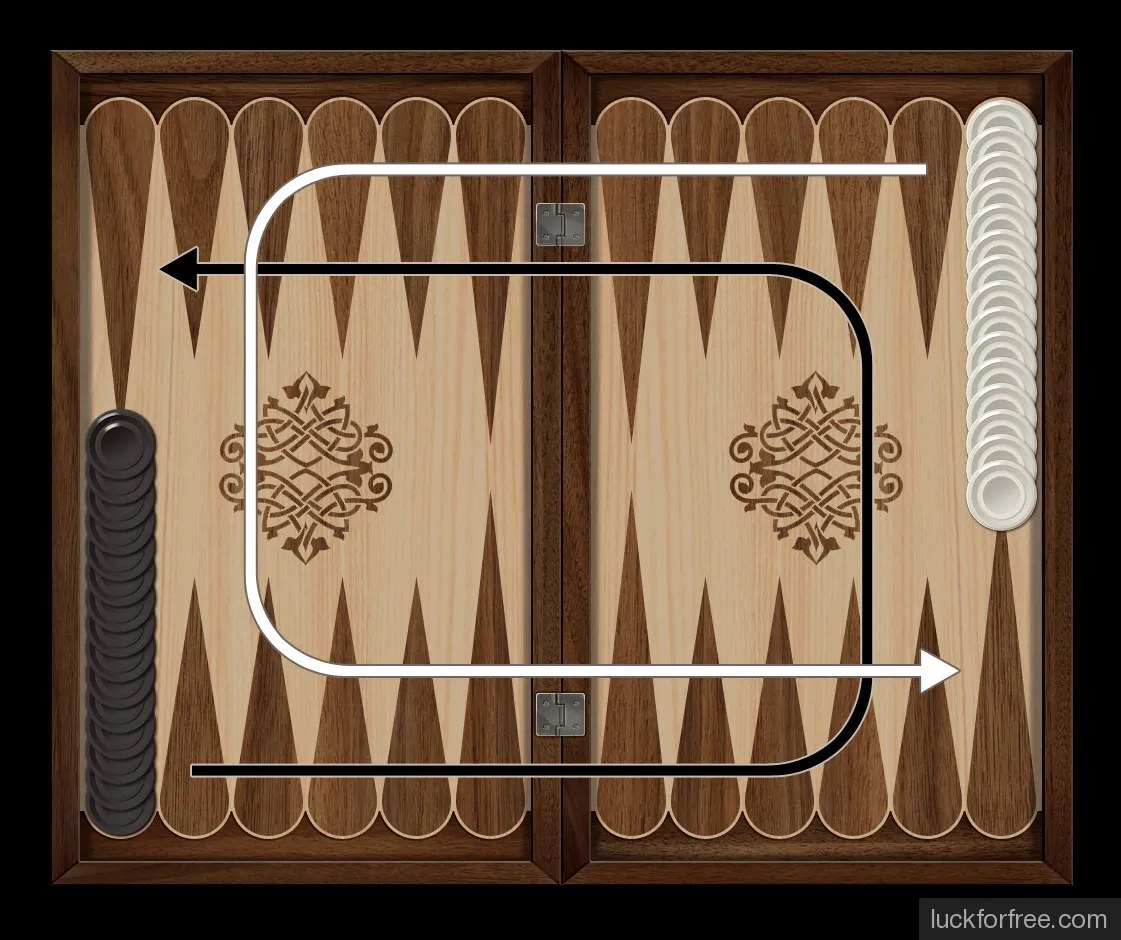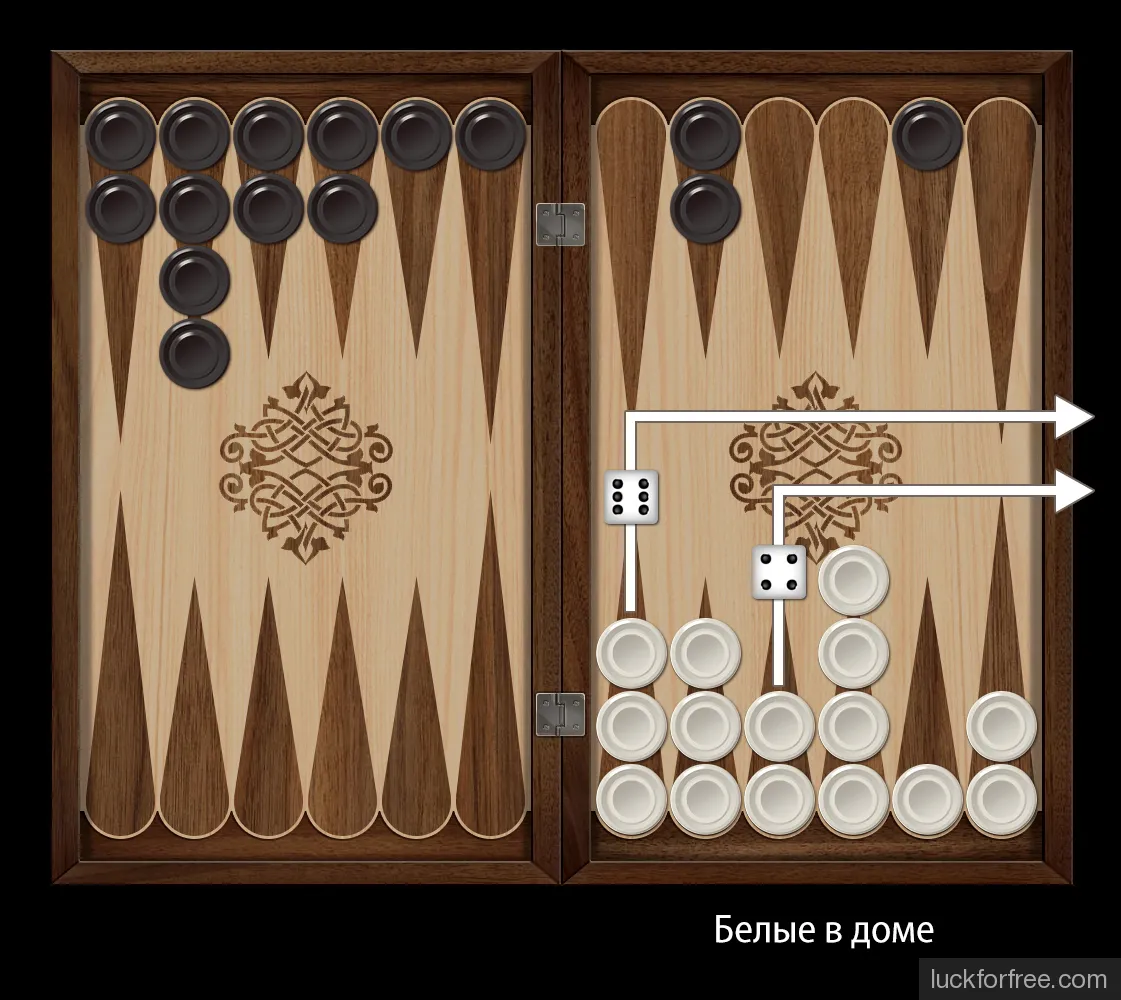Backgammon are long – detailed rules of the game Long backgammon are an ancient oriental game that the wise men were fond. She was conceived as an uncompromising dispute in which it must be
Backgammon long – detailed rules of the game
Long backgammon is an ancient oriental game that wise men were fond. She was conceived as an uncompromising dispute, in which the winner must be. The game requires the rivals of strategic thinking and the ability to conduct a combination struggle. It is impossible to predict who from two participants will win, because Random loss of bone values can radically change the position of the players throughout the party. These are interesting backgammon interesting and fascinating. Their rules are so simple that the number of fans to fight in them is just huge.
Rules Games in Long Backgammon
Play in long backs of two people on a special board, which is two equivalent half, aggregate consisting of 24 cells. Cells are placed by narrow triangles (arrows). Each rival has 15 checkers (one – bright, in the other – dark), plus a pair of standard bones (charges). The task of each player is to overtake your checkers through the entire field and start in your "house", after which the first to remove them to the "board" of the boards.
Starting position
Each player puts all its 15 checkers from the left side to the 12th cell below, relative to its location (if you count right left).
The championship of the course in the game (and, accordingly, white-colored checkers) is determined as follows: each participant throws one charge, who has more value, he goes first. If the same values fell out, players throw the burdens until someone drops more.
If the rivals play two or more parties in a row, the first move in each new party they are made in turn.
How to do
The movement of checkers is performed counterclockwise. The numbering of cells begins from the bottom to the right counterclockwise. White House is located at the bottom right, cells 1-6, black house – at the top of the left, cells 13-18.

From the starting boom, you can only take one checker. Accordingly, the first move in the game player makes one checker: on the total value of both marks (with their different values) or four strokes (at a double), according to the value of one of the charges. In future moves, you can use two checkers, for example, one from the starting boom, the second – from the playing field or both strokes (checkers) from the playing field.
The exceptions are situations when, when the player is first progressed, the White has received a double 3: 3, 4: 4 or 6: 6. Then, from the starting boom, white can take two checkers, as in this situation, it is not possible to play one checker in this foot. There is no possibility.
For playing black, this rule is also valid, but with the exception: when the first throw is white 5-5, and the subsequent throw of black 4-4, black remove one checker from the starting boom and make only one move.

The cell, on which at least one rival shaft stands, is considered busy and put her checker on it.
You can walk on so many cells as it fell on each of the charges. For example: one checker – on the total value of both marks (the value of each is separate); Two checkers – to the corresponding value of each burden.
If the bone dropping the bones – the number of moves doubles. That is, you can make four strokes with one checker, according to the value of one bone, or "divide" moves on any amount of checkers, for example, one go to four checkers.
It is impossible to skip the moves.
If it turns out to be done only on one of the values of both zag, the player makes one possible move, the second burns. If you manage to move only one checker to choose from, moving to the greater value. For example, 6: 4 fell, it is possible to play or 6 or 4, the player is obliged to play 6.
If the values of the values are not allowed to make the move (positions are occupied by the enemy's checkers), the player misses the move.
It is impossible to skip the complete move, even if it is not profitable. For example, 5: 2 fell. It is possible to play one checker 5, then 2 it is impossible to play, and there is an opportunity to play 5: 2 with another checker, the player is obliged to play 5: 2, even if the first option is beneficial.
It is forbidden to build a "block" of six or more checkers, if there is no rival checkers in front of the built-up block. At the same time, the position of the enemy's checkers (in the house or outside of the house) does not matter.
Chisel's release
After all 15 checkers went into the "house", they can be removed on the "board" of the boards. For example, if the values of the valve 6 and 4, the player removes one checker with the 4th (right) cells and one with the 6th (right).

If there are no checkers on the cell with the numbers of the thrown, the player should move the checkers (make a move) according to the general rules. For example: at Zama 6: 5, there is no player on the 5th cell of the player, it throws one chamber with a 6th cell, and the second makes the top five with the 6th cell on the 1st.
If you can move or make a selection of checkers, the player cannot (there are no such options) – it removes the box with an extreme left cell on the side, on which there are checkers. For example, if at Zama 3: 4, and the checkers remained only on the 1st and 2nd cells – the player should be removed on the "board" of priority checkers with the 2nd cell, and then with the 1st.
The player is obliged to use both values of the guidelines that fell out, you can not refuse the stroke if the result of the stroke is unprofitable. For example, two checkers stand in positions 4 and 6, at Zama 5: 3, he wants to go 3 from the 6th position on the 3rd to throw a 5-bed checker from the 4th position, i.e. To actually play 4: 3. Player is obliged to play a complete stroke 5: 3, because It has such a move: from the 6th position runs 5 to the 1st position, and from the 4th position he goes 3 to the 1st position.
The result of the game
The game ends at the moment when one of the participants completely removed his checkers from the cells on the board. This player is considered the winner.
If one of the players clicks the "surrender" button, it actually recognizes defeat, the game is completed and the gain receives the enemy.
- "Oin" is a position in the game when the loser brought from home at least one checker, while he loses one bet.
- "Mars" is a position in the game when the loser did not bring any checkers out of the house, while his loss is two bets.
This rule is also followed in the case when one of the players pressed the "Rent" button. At the same time, the player loses the bid according to the position of checkers on the board (Mars or Oin) and the corresponding preliminary settings. For example, the player surrendered to the position of Mars checkers, but the "Oin" option was selected in the preliminary settings, respectively, the loss is one bet (OIN).















